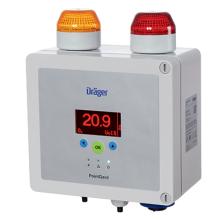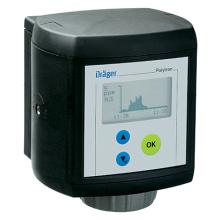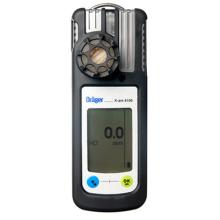Hydrogen peroxide / H₂O₂

Gas Identification
Oxygenated water, Perhydrol
Chemical properties
Physical properties
Flammability limit
Threshold limit value
Hydrogen peroxide : Description and use
Hydrogen peroxide simultaneously has oxidising properties in relation to iodide ions and reducing properties in relation to permanganate ions. Its aqueous solution is called oxygenated water. It is colourless and slightly more viscous than water. It is an effective bleaching agent. It is used as an antiseptic. It is a pale blue liquid (in its pure state).
Flammability
This product is flammable under the following conditions:
- It can catch fire if it is contact with organic substances.
- It can catch fire if it is contact with substances which are readily oxidisable.
Explosiveness
It can explode if it is in contact with organic substances. Concentrated vapours at over 40% may explode upon decomposition.
Its properties are useful in the preparation of a wide range of aqueous solutions which are used:
- As a bleaching agent for wood pulp, paper pulp, recycled paper and textile fibres.
- As an intermediate for synthesis and an oxidisation agent: hydrogen peroxide is used to manufacture numerous mineral, organic and chemical products, and in particular, organic peroxides, mineral peroxides (mainly perborate and sodium percarbonate), peracetic acid, plasticisers (obtained by epoxidation of unsaturated compounds, for example using soybean oil), amine oxides, etc.
- As a disinfectant or bleaching agent in the pharmaceutical industry (disinfectant for contact lenses, etc.), the food industry (disinfection of packaging and equipment), etc.
- As a component in hair care products (hair dye, perm setting agent).
- As an industrial and domestic waste water treatment, and a treatment agent for some gaseous effluents (hydrogen sulphide formation control).
- As a propellant for aeroplanes and rockets.
- In the metal industry, in metallurgy, in the electronics industry.
- In laboratories.
Hydrogen peroxide : Warnings and caution
H271 - May cause fire or explosion; strong oxidiser.
H302 - Harmful if swallowed.
H314 - Causes severe skin burns and eye damage.
H332 - Harmful if inhaled.
H335 - May cause respiratory irritation.
P102 - Keep out of reach of children.
P261 - Avoid breathing dust/fumes/gas/mist/vapours/spray.
P280 - Wear protective gloves/protective clothing/eye protection/face protection.
P305+P351+P338 - IF IN EYES: Rinse cautiously with water for several minutes. Remove contact lenses, if present and easy to do. Continue rinsing.
P310 - Immediately call a POISON CENTRE or doctor/physician.
P221 - Take any precaution to avoid mixing with combustibles.
P235+P410 - Keep cool. Protect from sunlight.
Hydrogen peroxide : Related products
Fixed Gas Detectors
Portable Gas Detectors







